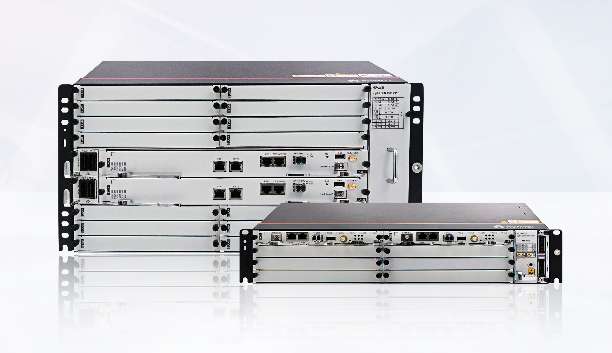OTN to Edge: The Optimal All-Optical Metro Networks for Experience & TCO
At the 8th Huawei Optical Innovation Forum, Mario Zhang, Vice President of Huawei Transmission Network Domain, delivered the keynote speech “Edge OTN: Building All-Optical Metro for Optimal Experience and TCO”. The key to building all-optical metro networks is to extend OTN to the network edge and deploy E2E optical cross-connect (OXC). This provides one hop to cloud, guarantees premium experiences, and reduces TCO. Read more below.
Exceeding connectivity to embrace the experience economy era
Today, the digital world has entered the experience economy. With the introduction of 5G and cloud technologies in 2020, the definition of connectivity has become much broader. Connection requirements are changing from “connected” to “well-connected”, and customers are paying more attention to experiences. New services — such as online education, cloud VR gaming, and online banking — are emerging, and these demand a high-quality transmission network.
Limited network resources are the biggest challenge
From the perspective of the network side, network resources face great challenges due to high costs and the difficulties in developing new services. When a traditional hop-by-hop and multi-ring stack architecture is used, the entire network needs to be reconstructed due to congestion on 30% of links. Siloed networks for B2B, B2H, and B2C services consume a huge amount of equipment room space and power. Limited rack space and power supply at sites result in major difficulties in network expansion.
The key to building an all-optical metro architectureis to extend OTN to the network edge, directly connecting homes, enterprises, and sites. This architecturealso provides one hop to cloud, guarantees bandwidth, lowers latency, and optimizes availability. At the optical layer, OXC is deployed at COs and even access sites, allowing E2E optical switching and millisecond-level latency. Meanwhile, with OTN extending to sites, unified transmission for all services and unlimited bandwidth are provided, meeting network evolution requirements in the next decade and achieving optimal TCO.
At the site level, OTN devices are deployed at OLT sites, building OptiX SuperSite. With OTN devices directly connecting to OLTs, the network can provide one-stop access for premium B2B, B2H, and B2C services, which can extend premium connectivity to various industries. Moreover, OptiX SuperSite provides an innovative OTN P2MP Private Line Solution that uses existing PON infrastructure to implement fast and wide coverage for SMEs in commercial buildings. It also leverages premium OTNs and smart private lines to offer fast and superior experiences at low cost.
All-optical metro networks promote SDH modernization, saving space and power
Traditional Ethernet switches and SDH/MSTP devices are large but small in capacity, consuming a lot of power and creating a large footprint. In contrast, all-optical metro networks use next-generation optical-electrical integrated OTN devices that enable the effective and accurate identification of invalid services, improving SDH-to-OTN modernization efficiency by 80 times. In addition, Huawei offers professional services for network evaluation and service migration, thereby ensuring smooth, efficient, E2E project delivery with minimum service impact.
All-optical metro networks use next-generation optical-electrical integrated OTN devices that improve SDH-to-OTN modernization efficiency by 80 times
Edge OTN accelerates the construction of all-optical metro networks
Huawei’s latest Edge OTN Solution uses highly-integrated OSN 1800 series, which features a simplified optical layer, electrical layer, sites, and operation. It will advance OTN to edge and all-optical metro network building to achieve optimal experiences and TCO.

Visit the OptiX OSN 1800 OTN Platform product page and read why GlobalData ranked it the only “Leader” in its August 2021 Packet-Optical Access report.
Disclaimer: Any views and/or opinions expressed in this post by individual authors or contributors are their personal views and/or opinions and do not necessarily reflect the views and/or opinions of Huawei Technologies.
Leave a Comment